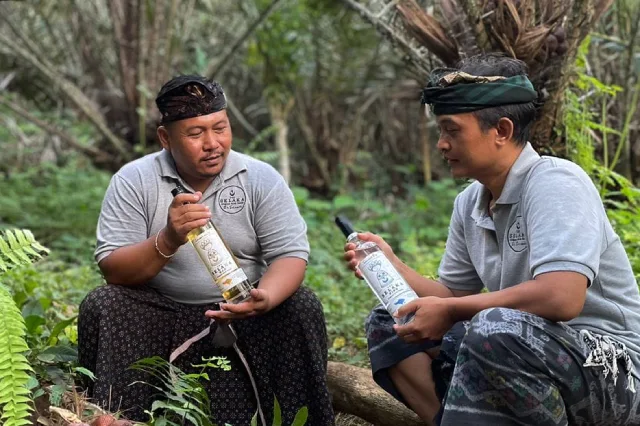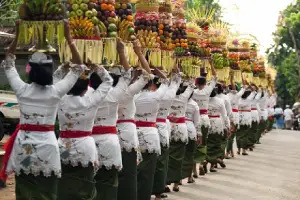Things to Do in Bali
11 Best and most iconic Statues and Monuments in Bali
Iconic Bali Statues & Monuments that are worth a Visit
Bali is a place steeped in culture, and its wealth of captivating statues is a testament to this heritage. As you explore the island, you’ll encounter these statues depicting gods and goddesses, seemingly poised to greet you.
Behind their aesthetic appeal lies a rich tapestry of stories, often overlooked by many. Let’s take a closer look at some of Bali’s most remarkable statues. The statues often depict scenes from Balinese and Hindu mythology with detailed carvings.
GARUDA WISNU KENCANA Statue
Photo credit: daisukephotography

Photo credit: daisukephotography
The Garuda Wisnu Kencana (GWK) statue is a masterpiece and one of Indonesia’s most iconic landmarks. Towering at 121 meters, it depicts the Hindu god Vishnu astride Garuda, his loyal, eagle-like companion. The Garuda is also the national emblem of Indonesia and represents freedom.This magnificent statue, larger than both the Statue of Liberty and Rio’s Christ the Redeemer, has become a powerful symbol of cultural pride and unity in Indonesia.
It took 28 years to build! The entire structure was built from 754 modules weighing more than 3,000 tons, with a steel frame covered in copper and brass skin. On top of Vishnu’s head sits a 3.5-ton crown covered with gold-plated mosaics. Nyoman Nuarta is the mastermind and initiator of the Garuda Wisnu Kencana.
120 artists were involved in GWK’s construction, costing a total of Rp450 billion (ca 27mio USD)
SATRIA GATOTKACA STATUE
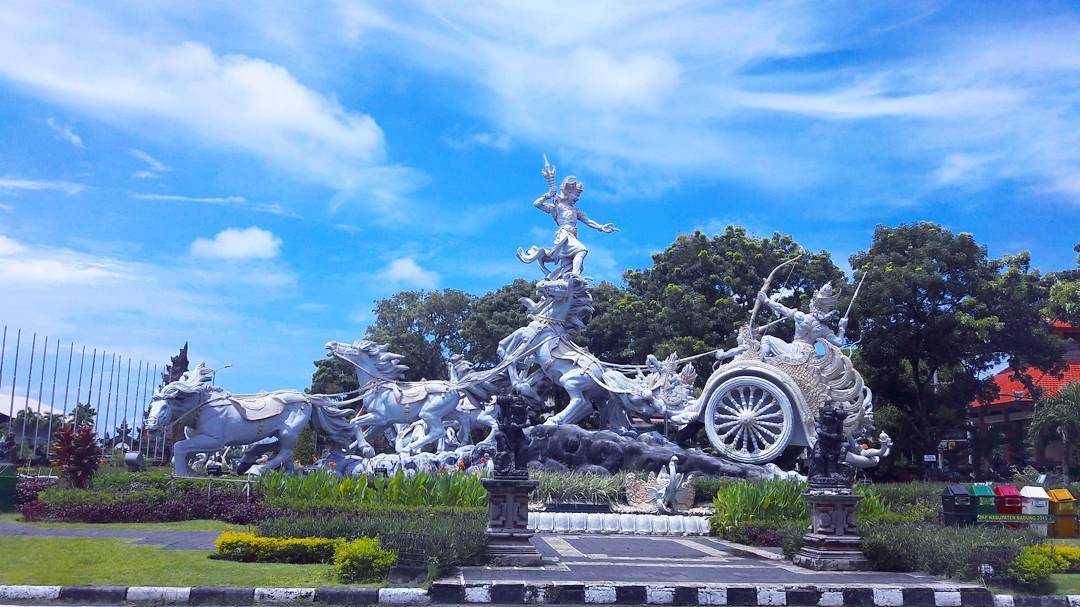
Photo credit: fandiarya
Located at the T-junction of Jl. Raya Tuban and Jl. Ngurah Rai Airport, this statue is one of the beautiful sights to greet visitors arriving at Ngurah Rai International Airport. Inaugurated on October 30, 1993, the Satria Gatotkaca statue was designed by local artist, I Wayan Winten from Ubud. This statue depicting Gatotkaca, a knight with the ability to fly and has a great magical power who is responsible for air defense and security protection for the Pandawa Kingdom. That’s why this statue was built near the airport.
TITI BANDA STATUE
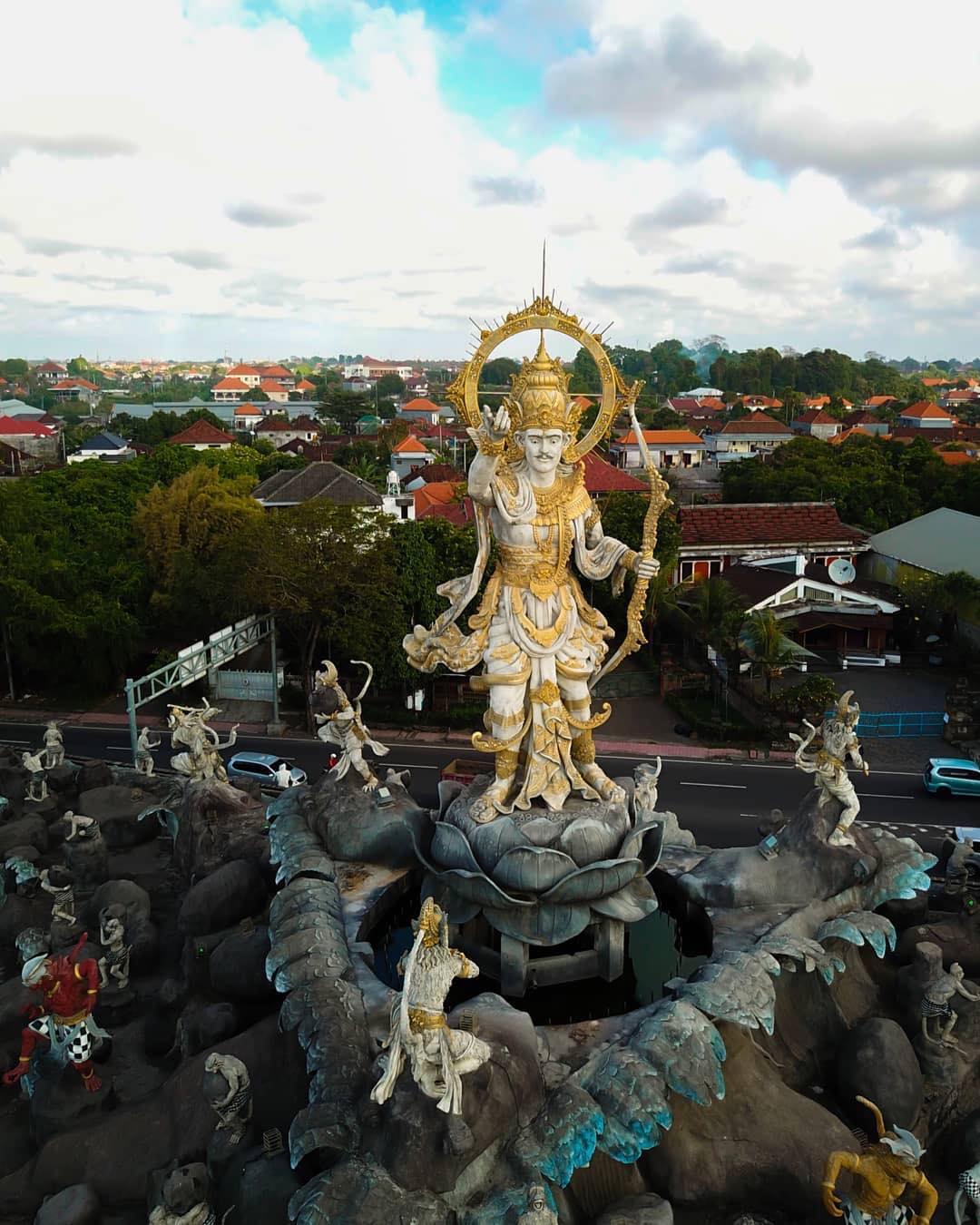
Photo credit: riskidarmawan_
It’s hard to miss this huge statue when traveling east on the Denpasar bypass. The grandiose 15-meter-tall statue tells the story of Rama and his monkey troops consisting of 18 heads, where five of whom were chief of the monkey, who built the Titi Banda Bridge across to present-day Sri Lanka. The Titi Banda statue is located on the T-junction on Jl. Ida Bagus Mantra Bypass towards Jl. Ngurah Rai By-Pass. This location was deliberately chosen because it was considered a strategic area and one of the most traveled by tourists.
DEWA RUCI STATUE
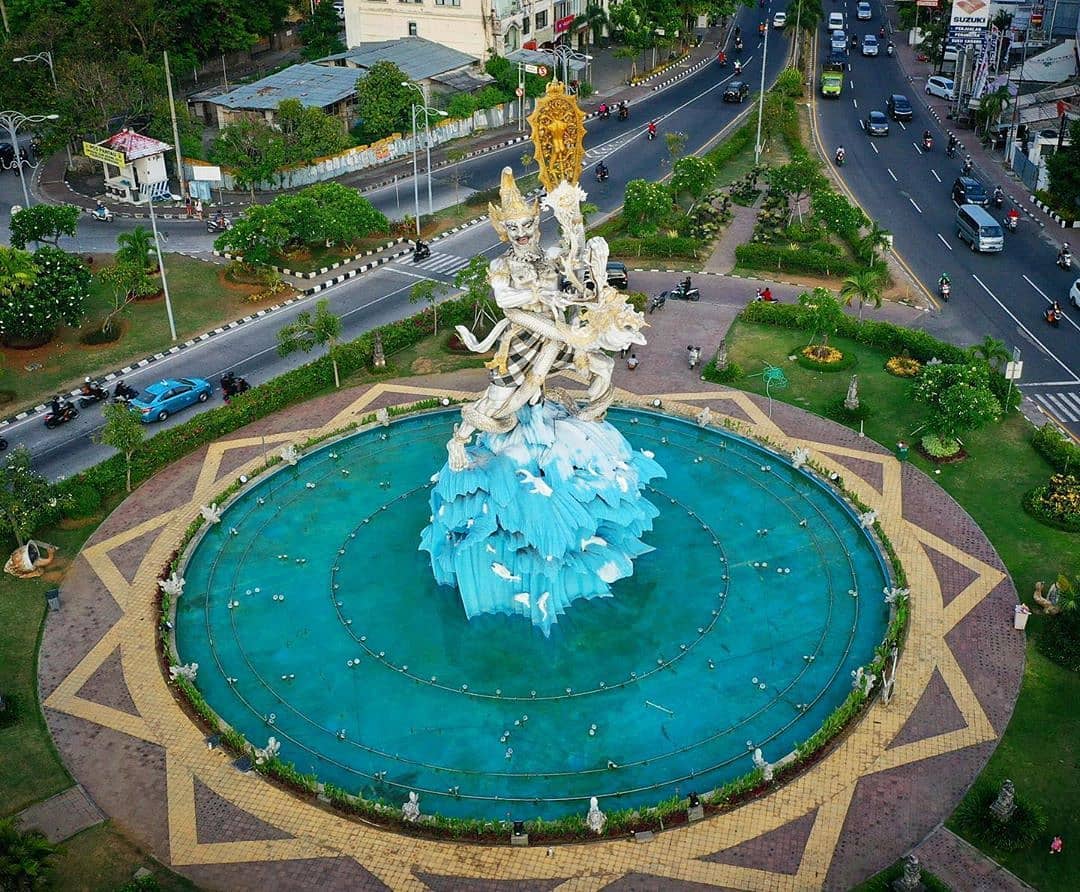
Photo credit: inengahsuarna
One of the most famous Balinese statues that locals and tourists alike see every day if they are going in/out of Kuta, this statue graces the area known as Simpang Siur – an intersection between Denpasar, Kuta, and the famous Sunset Road. Built in 1996 and designed by Balinese artist I Wayan Winten, this amazing statue features a Bima (one of five children of Pandawa) figure wrapped around by a dragon atop a wave-like structure. It tells a story where Bima was ordered by his spiritual teacher to get some spring holy water from the sea, even he knew that it’s impossible to get.
DEWI INDRA STATUE
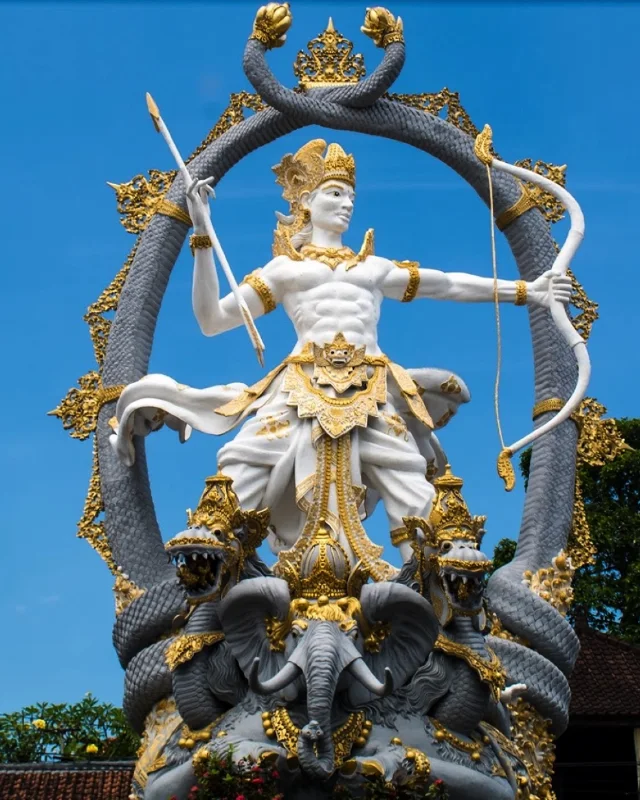
Photo credit: Madhukumar Menon
Majestically sitting only one km to the east of Ubud town center is Indra Statue, one of the landmarks of Ubud that was built in 1995 by I Wayan Winten who also designed the Satria Gatotkaca Statue. Indra is a legendary warrior and the God of War. He is depicted standing on an elephant head wielding his bow and arrow.
CATUR MUKA STATUE
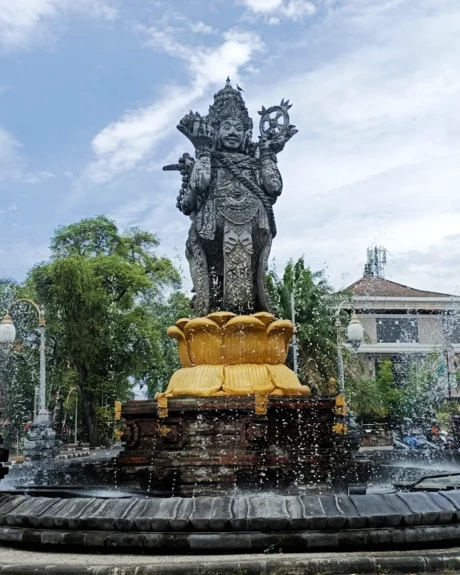
Photo credit: Cokorda Sarotama
Imposing at 9-meter-tall, this landmark of Denpasar City was built in 1973 under the critical eye of the famous artist from Ubud, I Gusti Nyoman Lempad.This granite statue depicting the four-faced Brahma, a supreme Hindu god. Each of the four faces of the statue looks to a compass point (north, south, east, and west directions). One of the most important actual functions of Catur Muka is serving as a point of orientation within the city of Denpasar.
DEWI DANU STATUE
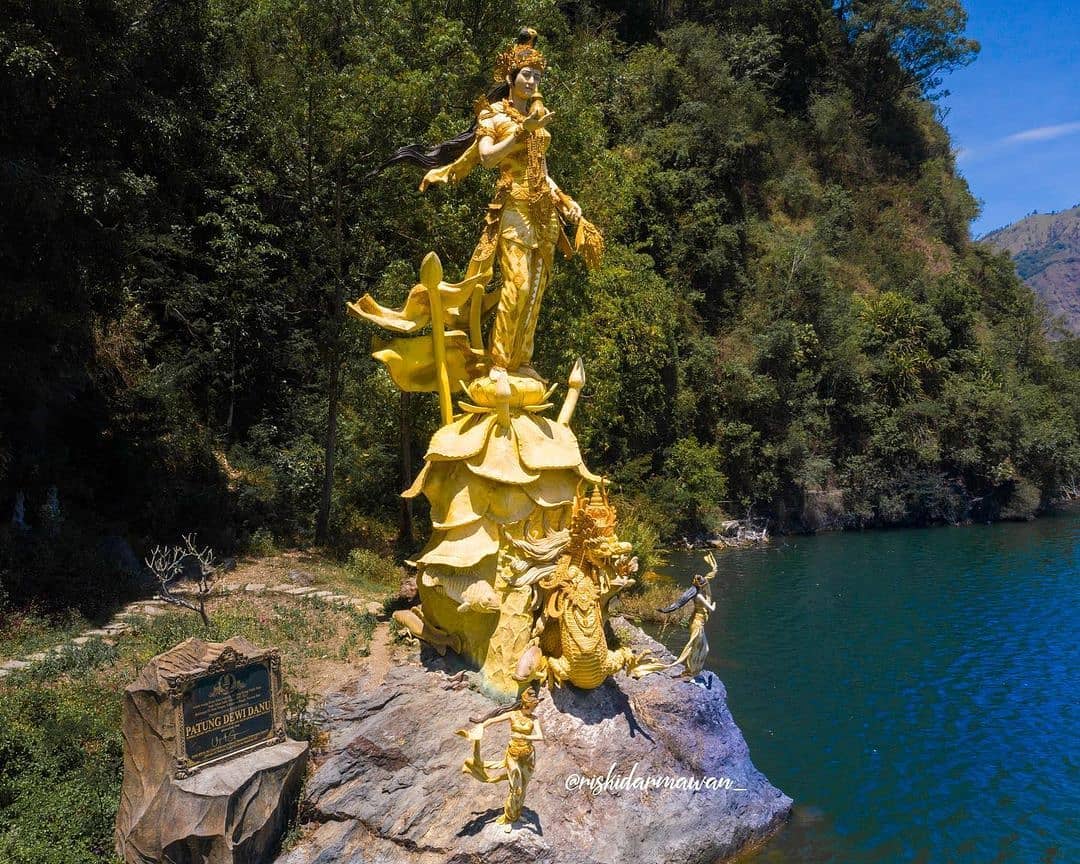
Photo credit: riskidarmawan_
The artwork of I Gede Wibawa, the Dewi Danu statue stands at 15 meters in height on the edge of Lake Batur. It was built in 2016 as the largest and tallest Dewi Danu statue in Indonesia. The word “Danu” refers to lake in English while “Dewi” means Goddess.
BAYI SAKAH STATUE
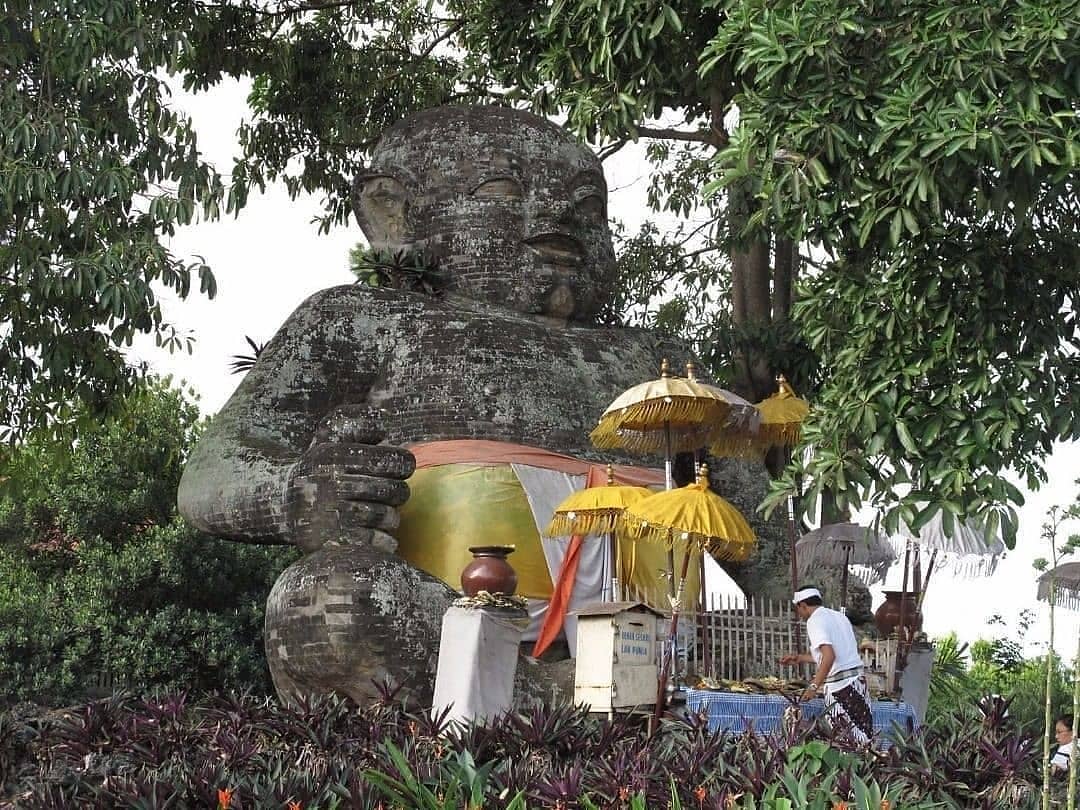
Photo credit: gianyarinfo_
On the main crossroads of Sakah village, there is a giant baby statue which according to some sources symbolizing the Brahma Lelare, God Brahma as a child, as the guard of this very important intersection to ward off evil spirits, and finally accidents will be minimized. It was built in 1989 by the Gianyar Regent at the time. Without a clear chronicle, the tales often told about the statue are chilling. Wails heard from the giant baby are expected come full moon.
KUMBAKARNA LAGA STATUE
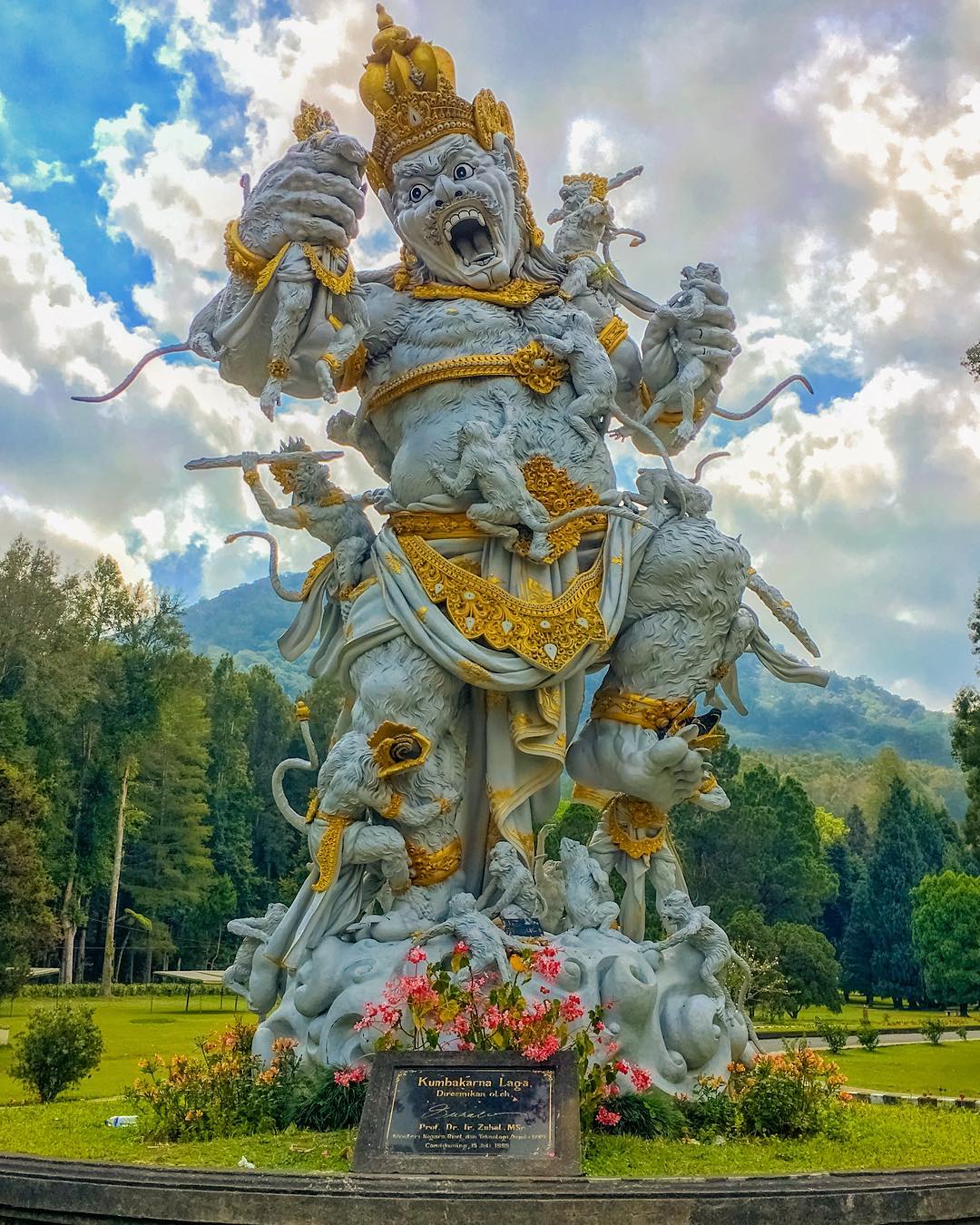
Photo credit: arefkaram
This 15-meters tall statue can be found in the Bedugul Botanical Garden. As the name implies, the statue depicts the battle from the Ramayana story between Kumbakarna, the younger brother of Rahwana, and monkey troops in an attempt to seize Dewi Sinta from the captive Rahwana.
Monument to I Gusti Ngurah Made Agung

SIMBOL KERAJAAN : Patung Raja Denpasar I, I Gusti Ngurah Made Agung.(adrian suwanto/radar bali)
The Monument of Puputan Badung in Tainsiat: A Symbol of Bravery and Resistance
The Tainsiat Banjar, located in Desa Dangin Puri, Denpasar, holds deep historical significance, forever tied to the Puputan Badung, one of Bali’s most heroic battles against colonial forces. The very name “Tainsiat” originates from the words Taen meaning “once” and Siat meaning “battle” in Balinese, indicating that this was once the site of a fierce confrontation.
The Last Battle of I Gusti Ngurah Made Agung
The Puputan Badung was the last stand of I Gusti Ngurah Made Agung, the sixth king of Denpasar, who led his people in a final battle against the Dutch colonial invaders. The battle began when Dutch ships anchored near Sanur in the early 20th century. The ships ran into trouble, almost capsizing, and the local Balinese people rushed to assist them. However, instead of gratitude, the Dutch accused the locals of attempting to loot the ship.
Outraged by the false accusations, the people of Sanur informed the royal houses of Puri Satria Denpasar, Puri Pamecutan, and nearby regions, calling them to action. In response, the entire community united to defend their honor and homeland. The warriors dressed in white, symbolizing their readiness for the ultimate sacrifice, and gathered at the town center, known as Catus Pata, to confront the invading Dutch forces.
The Battle of Tainsiat and the Death of a King
The confrontation escalated into a full-scale battle, now remembered as Puputan Badung, a ritualized fight to the death rather than surrendering to colonial rule. The conflict culminated at Banjar Tainsiat, where the king, I Gusti Ngurah Made Agung, and many of his followers made their final stand. Tragically, the king and numerous warriors fell in battle, marking the end of this fierce resistance.
Commemorating the Heroic Sacrifice
The Tainsiat monument serves as a reminder of the bravery and sacrifice of the Balinese people, led by their king, against overwhelming odds. The Puputan Badung battle is a symbol of defiance and the Balinese commitment to preserving their sovereignty and culture, even in the face of colonial aggression.
Today, this historical site not only honors the memory of I Gusti Ngurah Made Agung and the countless warriors who fought by his side, but it also stands as a testament to Bali’s enduring spirit of resistance and unity.
Monument to Mayor I Gusti Ngurah Sugianyar

Photo credit: arefkaram
Monument to Mayor I Gusti Ngurah Sugianyar: Honoring a Hero’s Legacy
In recognition of the struggles and sacrifices of its national heroes, the Jembrana Regency Government erected a statue of Mayor I Gusti Ngurah Sugianyar at the Batuagung crossroads. Standing at an impressive height of 12.74 meters, the monument was officially unveiled by Jembrana Regent I Putu Artha on December 21, 2017. The inauguration ceremony was attended by the Deputy Regent I Made Kembang Hartawan, local government officials, and notable community leaders.
Who Was Mayor I Gusti Ngurah Sugianyar?
Mayor I Gusti Ngurah Sugianyar, born on August 12, 1924, was a prominent figure in Bali’s fight for independence from Dutch colonial rule. He was the fifth child of I Gusti Ngurah Ketut Teken and I Gusti Ayu Putu Tawi, hailing from Puri Agung Pacekan in Jembrana. Mayor Sugianyar is remembered for his relentless dedication to the anti-colonial struggle. Alongside national hero Lieutenant Colonel I Gusti Ngurah Rai, Mayor Sugianyar led guerrilla campaigns against the Dutch in 1946 across various regions in Bali, including Kalanganyar, Munduk Malang, Penebel, and Tanah Aron, which saw one of the fiercest battles.
The Battle of Margarana
On November 20, 1946, Mayor I Gusti Ngurah Sugianyar was killed in the Battle of Margarana, a historic and heroic confrontation in Bali’s fight for freedom. He, along with Lieutenant Colonel I Gusti Ngurah Rai and 96 others from the combined forces of Ciung Wanara, sacrificed their lives in what became known as the Puputan Margarana, a battle that is commemorated every year on November 20 as Puputan Margarana Day. Mayor Sugianyar, at the time of his death, was only 22 years old, a testament to the youth and courage of Bali’s freedom fighters.
Inspiring Future Generations
During the monument’s inauguration, Regent I Putu Artha emphasized the importance of this statue as a source of inspiration for future generati

















